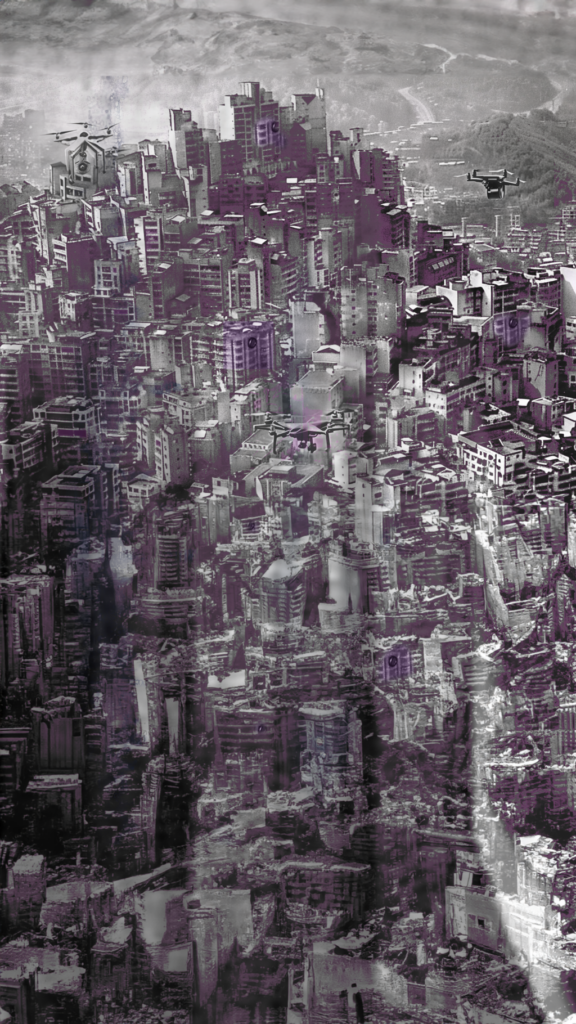
“Ready Player One,” portrays a dystopian future where ‘people stopped to try to fix problems and instead try to outlive them’. The movie plays out in an informal urban landscape of juxtaposed favela-like settlements forming organic superstructures, as well as in a virtual environment supported by a virtual reality headset. These worlds exist in symbiosis, intertwining the material and the virtual into a single lived experience.
Bigness, crucial to understanding this new state of being, refers to the scale and complexity that emerge when buildings reach a certain size, creating unique architectural and urban characteristics. The urban landscapes of the movie, with their huge, pyramidal, and lopsided structures, are not just tall but sprawling and multifaceted, moving away from the supertall, elegant designs of the past. They embody the autonomy of bigness, functioning as self-contained mini-cities supporting diverse programs and functions within a single structure, creating vibrant, dynamic environments. Despite being ugly and cheap, they are immeasurably vast, teeming with human vitality. The introduction of the virtual realm expands the interiors of the superstructure from vast to infinite. In the labyrinth where each room contains a multiverse, the skyscraper dream reaches its full potential.
The fundamental condition for this new iteration of bigness is a blasé attitude in face of the ecologically degraded material world, instead favouring escapism into the virtual multiverse. Why care about material possessions when a headset produces a new world every day? Conceptions of ownership and collective loose significance, allowing the city to be filled up with urban sediment and to finally collapse into singular urban superstructures.

